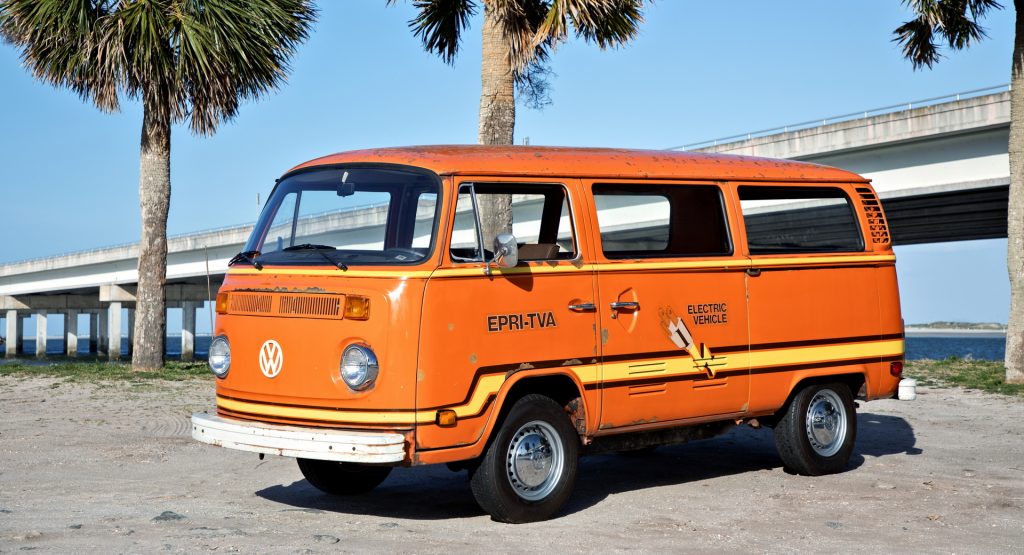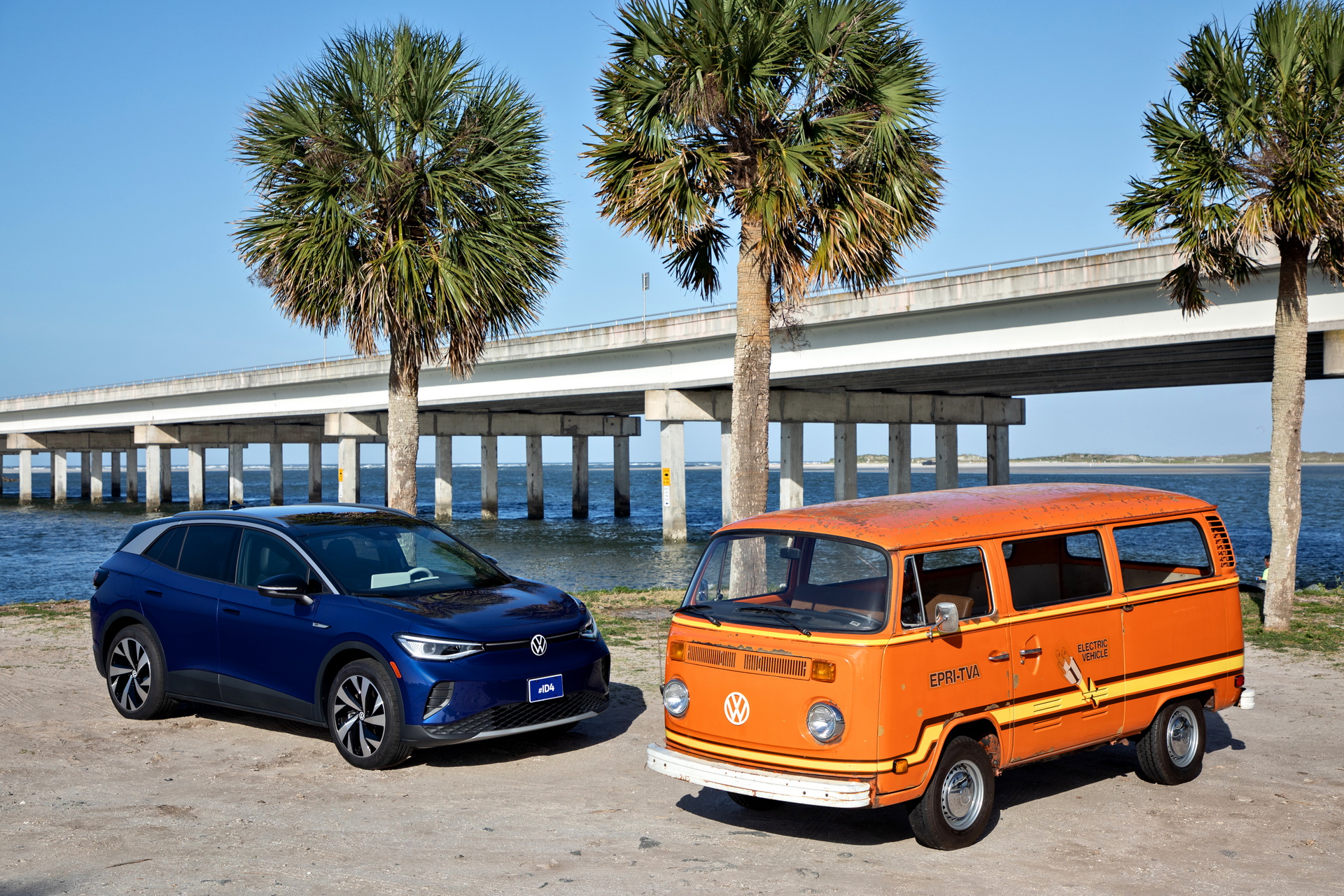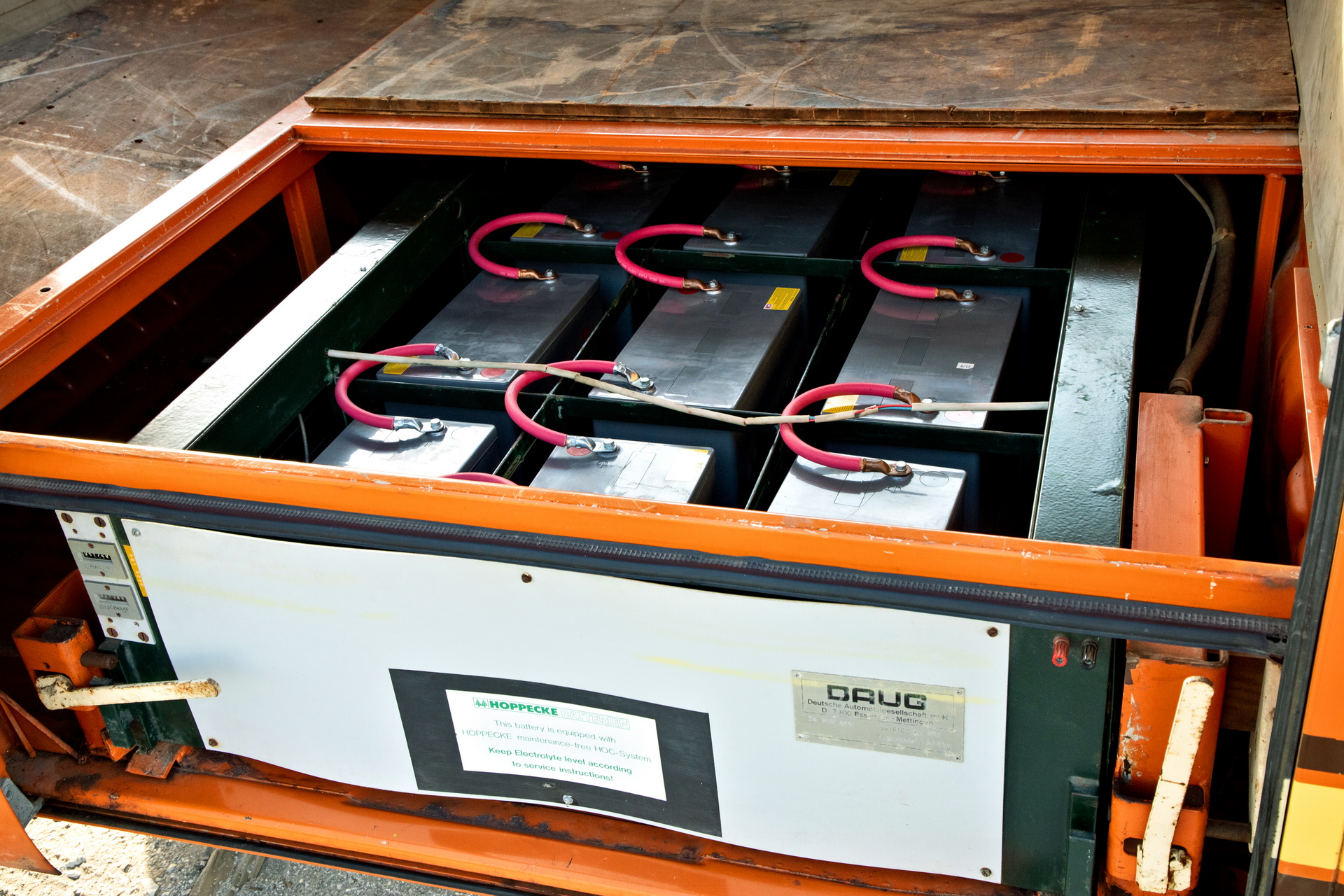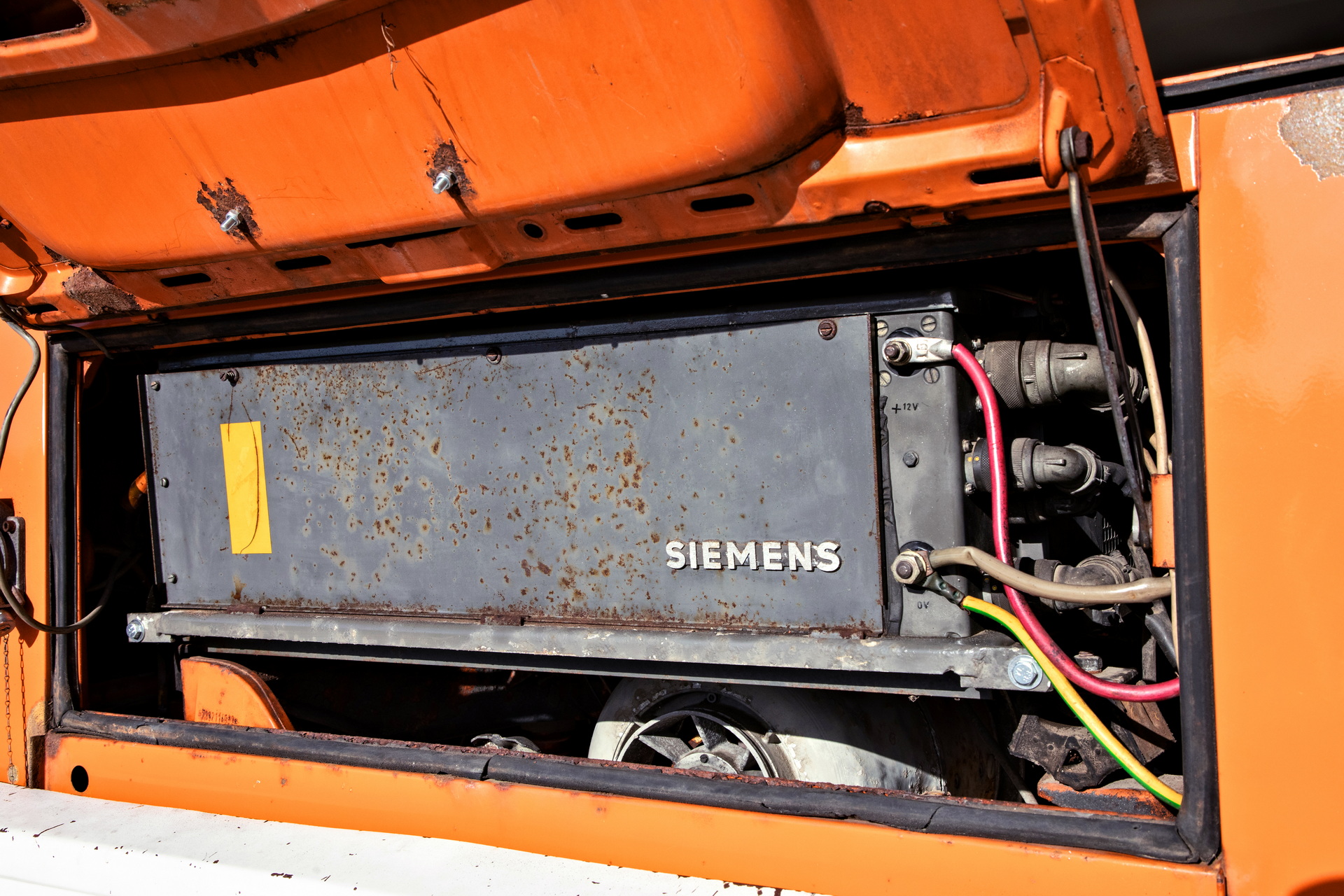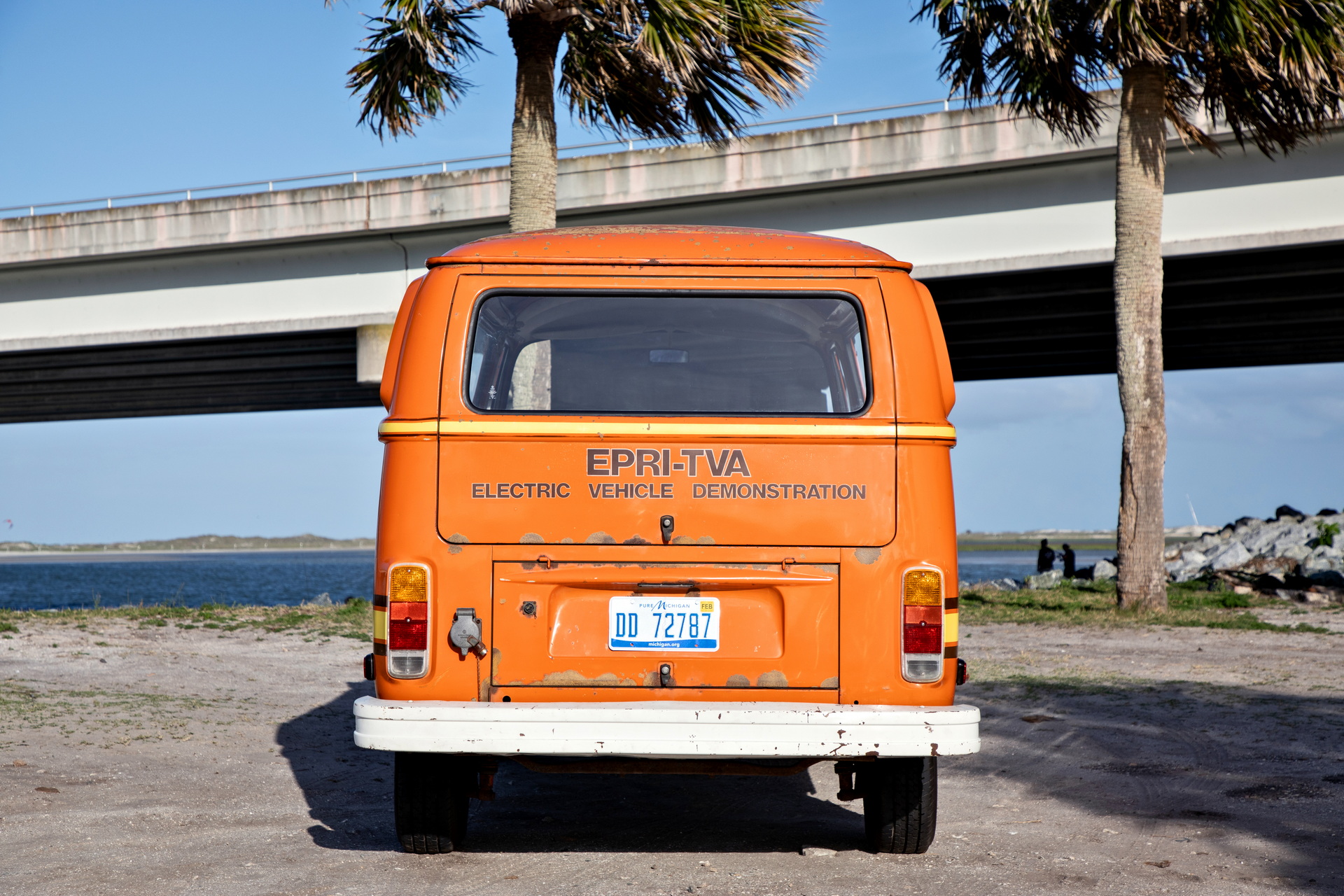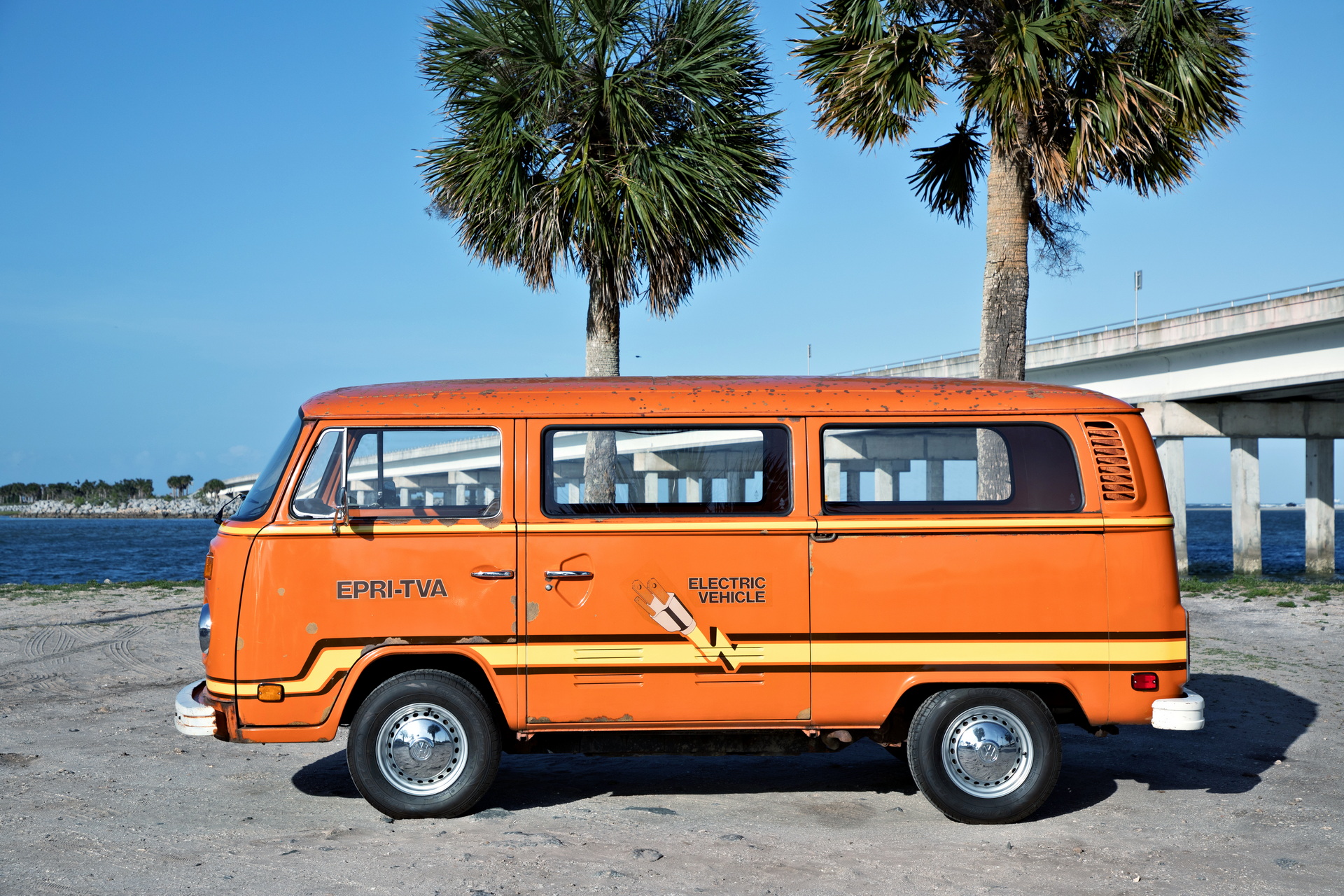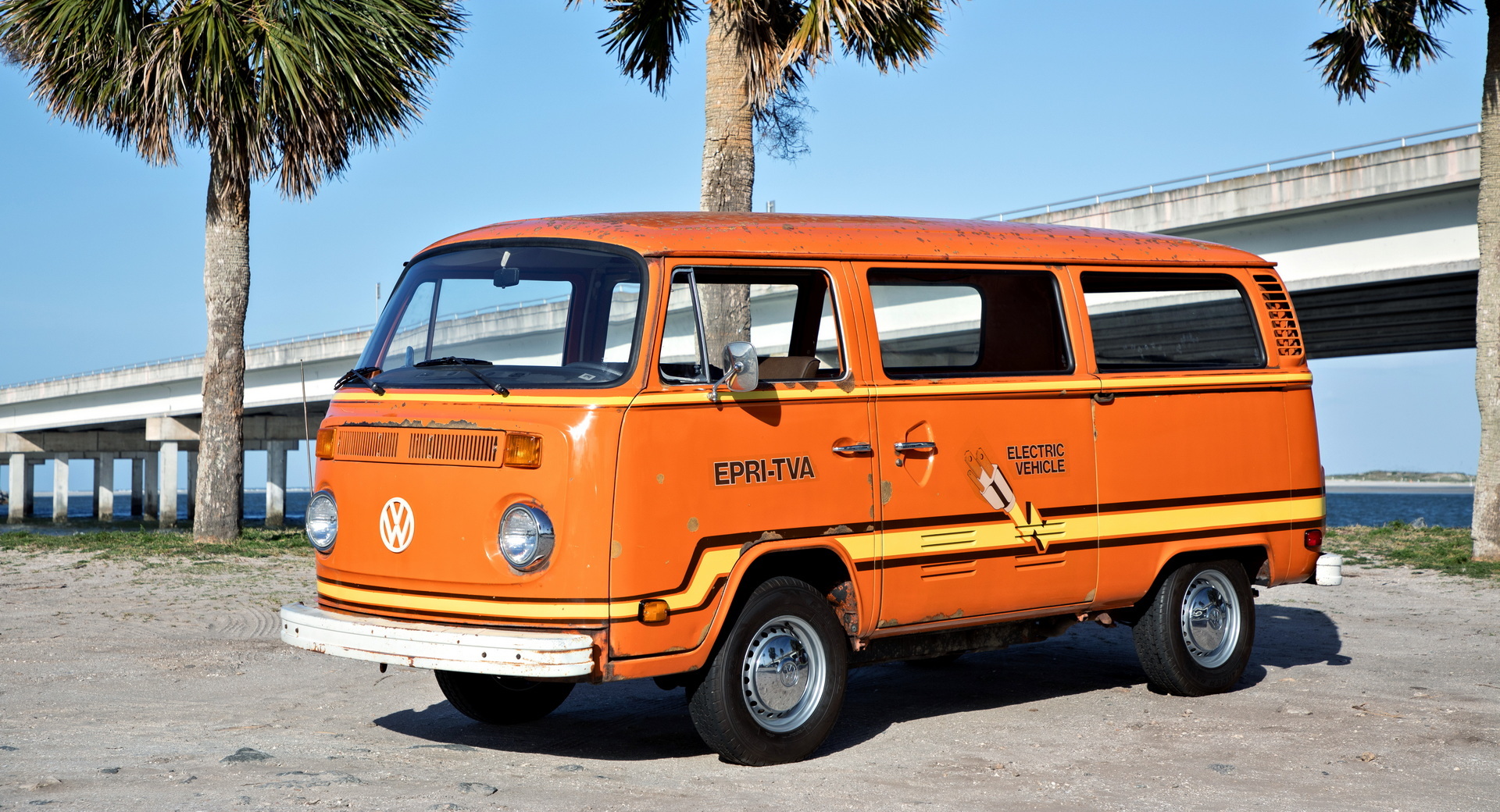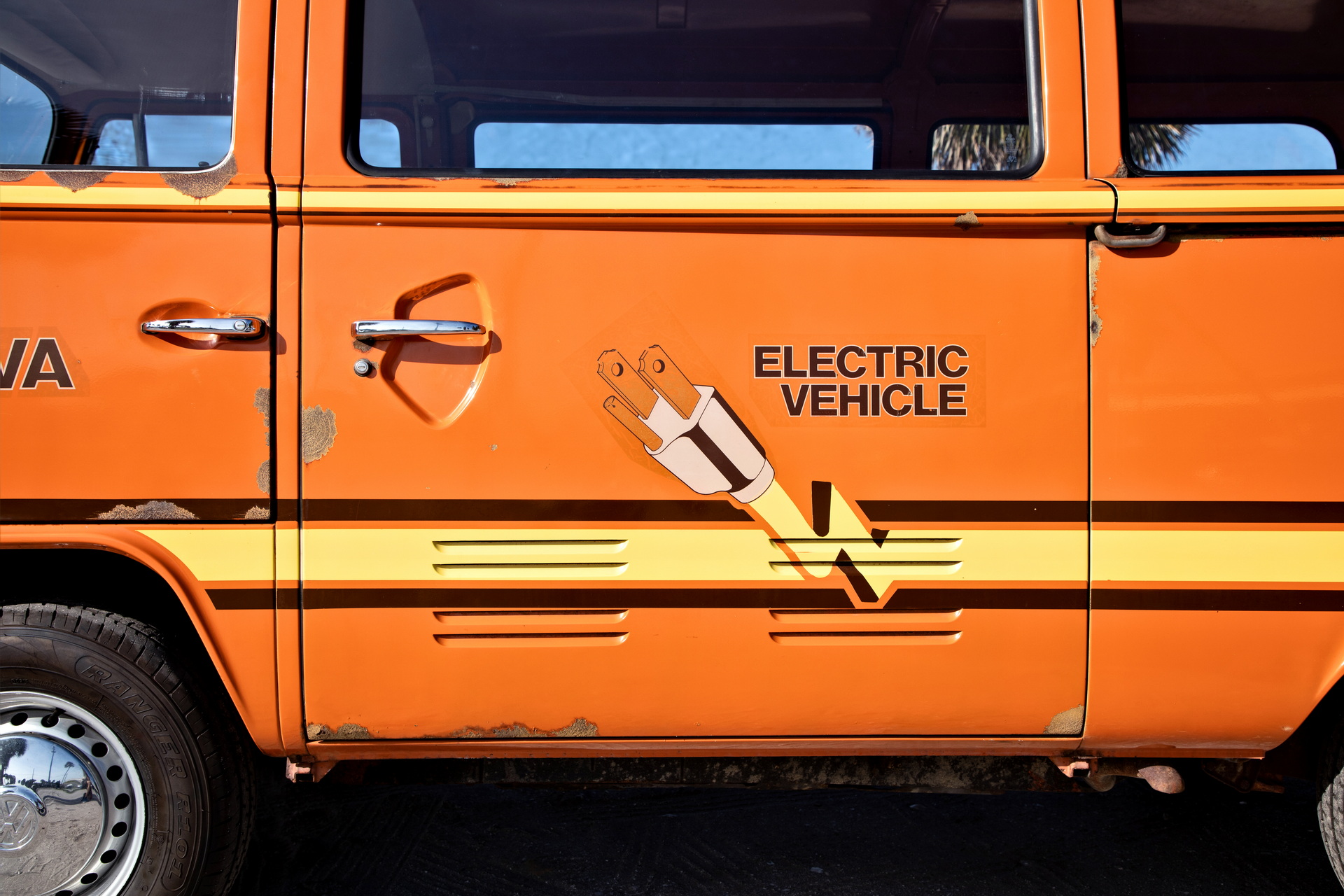Even the super-wealthy attendees at the Amelia Island Concours d’Elegance are thinking green and have made one of the themes of this year’s show historic electric vehicles. So Volkswagen has gone into its collection and found a 1979 Elektrotransporter.
The modified Type 2 microbus was one of many electric studies VW produced in the ’60s and ’70s to test the feasibility of the technology. Packed to the gills with 24 lead-acid batteries, the big bay window bus’s size made it a smart choice for the project.
Unfortunately, the whole package was quite hefty. In all, the battery pack weighed 1,225 lbs or roughly 40% of the microbus’s curb weight when it rolled off the factory line. Like modern EVs, though, the batteries were stored under a raised floor. Unlike modern EVs, the electric motors were bolted directly to VW’s four-speed transmission, which was locked in second gear.
Read Also: VW Electrifies Classic 1972 Type 2 Bus With The Help Of EV West
Considering that the engine that came out of the microbus was a Volkswagen flat-four that would have made around 50 hp, the 23 horses offered by the electric motor actually isn’t as ridiculous as it might initially sound given the technology of the era. It still wasn’t great, though, and it meant the top speed was just 48 mph (77 km/h).
Impressively, VW’s engineers did think to offer the Elektrotransporter with an early version of regenerative braking. Even more impressively, the automaker actually found customers for it. This one was originally used by the Tennessee Valley Authority, one of ten bought to test with the Electric Power Research Institute.
More recently, it was bought back by Volkswagen to become a member of its historic fleet and it will be driven on Sunday, May 23 on the Take Charge EV Parade at the Concours d’Elegance alongside one of VW’s latest electric vehicles, the ID.4.
“We’re excited to share two amazing Volkswagen electric vehicles with the public,” said Hein Schaefer, Senior Vice President, Product Marketing. “Volkswagen has a history of forward thinking and the ID.4 is only the first step in our plans to make electric vehicle innovation truly attainable for everyone.”




